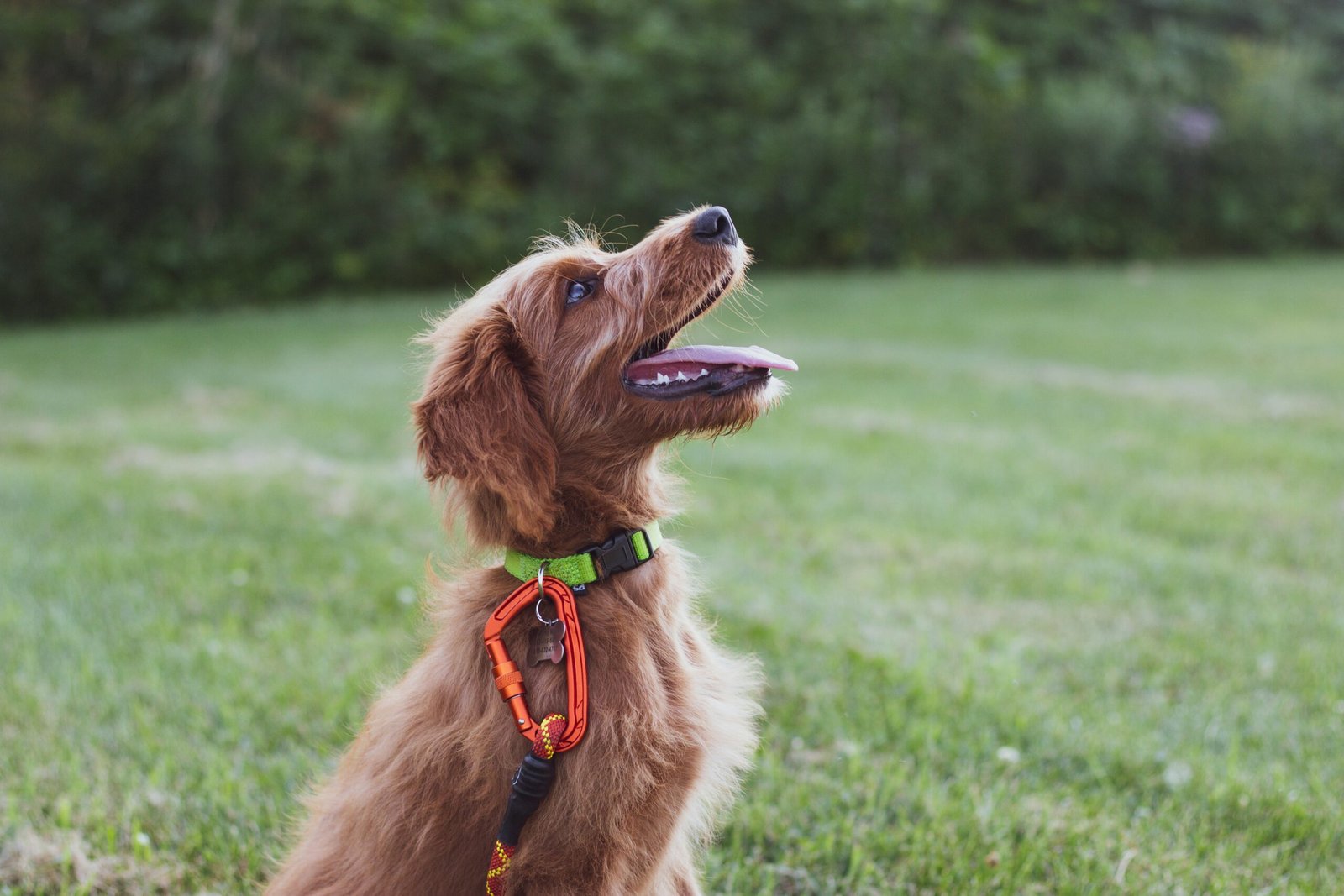
Introduction to Dog Training
Dog training is an essential practice for cultivating a harmonious relationship between pet and owner. It encompasses a variety of techniques and methodologies aimed at teaching dogs appropriate behaviors, commands, and skills. The significance of dog training cannot be overstated, as it plays a crucial role in establishing communication and trust between humans and their canine companions. Through effective training, dog owners not only ensure their pets’ good behavior but also enhance their overall well-being.
One of the primary benefits of dog training is the improvement of behavioral issues that may arise in various settings. Training allows dogs to understand expectations, which leads to decreased anxiety and aggression. Owners often report a significant reduction in problematic behaviors, such as excessive barking, jumping, or destructive chewing, resulting in a more peaceful home environment. Furthermore, consistent training fosters discipline and obedience, which can further encourage dogs to exhibit positive behaviors.
In addition to improved behavior, dog training serves as a vital source of mental stimulation for dogs. Engaging a dog’s mind through training exercises can prevent boredom, which is often the root cause of many behavioral issues. Activities such as teaching new commands, tricks, or utilizing interactive toys can keep a dog mentally sharp and engaged. This cognitive stimulation contributes to a happier, healthier dog, as well as a more gratifying experience for the owner.
Ultimately, dog training promotes happiness for both the dog and its owner. The process of training can deepen the bond between them, fostering a sense of mutual respect and understanding. As dogs learn to navigate their environment with confidence and obedience, owners enjoy the satisfaction of nurturing a well-mannered pet. In this light, dog training emerges not just as a tool for behavior correction, but as a foundation for a rewarding partnership built on love and trust.
Understanding Canine Behavior
Understanding canine behavior is crucial for anyone looking to succeed in dog training. Dogs are complex creatures, influenced by a range of instincts and social cues. At their core, dogs are pack animals, which means that their behavior is deeply rooted in social structures. They communicate through a variety of means, including vocalizations, body language, and scent. Recognizing these communication styles is fundamental for successful interactions between humans and dogs.
One of the primary instincts dogs exhibit is territoriality. Dogs often guard their homes and belongings, reacting to perceived threats with behaviors that can range from barking to aggression. Additionally, dogs possess a natural inclination to seek approval and validation from their human companions. Understanding this desire can enhance training efforts, as positive reinforcement can be a powerful motivator for dogs. By capitalizing on their need for social acceptance, trainers can effectively shape behaviors and cultivate a trusting relationship.
Another essential aspect of canine behavior is body language. Dogs employ a myriad of physical signals to convey their thoughts and feelings. For instance, a wagging tail does not always indicate happiness; it can also be a sign of excitement or anxiety, depending on the context. A lowered head or ears flattened against the skull may suggest fear or submission. Recognizing these subtle signals is vital for interpreting a dog’s emotional state and responding appropriately during training sessions. Such an understanding establishes a clearer line of communication, which is instrumental for a productive training experience.
In conclusion, a comprehensive grasp of canine behavior lays the groundwork for successful dog training. By familiarizing oneself with a dog’s natural instincts, communication styles, and body language, trainers can create a more effective training environment, ultimately leading to better outcomes for both the dog and the trainer.
Setting Training Goals
Establishing clear and achievable training goals is a fundamental step in the dog training process. To begin, it is essential to assess your dog’s current behavior. This assessment provides a baseline that helps in identifying specific behavioral issues that need to be addressed. Start by observing how your dog interacts with its environment, other pets, and people. Take note of any problematic behaviors, such as excessive barking, jumping, or aggression. By pinpointing these issues, you can create targeted training goals that focus on correcting these behaviors.
Once you have a good understanding of your dog’s behavior, the next step is to identify specific goals. For example, if your dog struggles with basic commands like “sit” or “stay,” a realistic goal could be to have your dog reliably respond to these commands within a certain time frame. It is important to make these goals measurable and time-bound. Setting deadlines can help both you and your dog understand what success looks like and when it should be achieved. Keep in mind that each dog is unique and may progress at different rates, so it is crucial to have realistic expectations regarding their learning pace.
During the training process, consistency and patience are paramount. Dogs thrive on routine, and consistent reinforcement of commands and behaviors will significantly enhance your training efforts. Use positive reinforcement techniques, such as treats or praise, to encourage your dog’s progress. Additionally, remember that setbacks may happen, and patience will be essential in maintaining your composure. Celebrating small wins along the way can foster a positive and encouraging training environment, ultimately leading to a more successful dog training experience.
Positive Reinforcement Techniques
Positive reinforcement is a pivotal approach in dog training that emphasizes rewarding desired behaviors to encourage their recurrence. By utilizing this method, trainers can effectively motivate dogs through the promise of rewards, creating a strong bond between the dog and the owner. These rewards can take many forms; common examples include treats, verbal praise, or physical affection. The core principle of positive reinforcement is straightforward: behaviors that are rewarded are more likely to be repeated.
To begin applying positive reinforcement in training sessions, it is essential to identify what motivates your dog. Different dogs have different preferences; some might respond best to tasty treats, while others may be more motivated by verbal praise or playtime. Once you determine the most effective rewards for your dog, you can integrate them into training strategies. For instance, when teaching a new command, such as “sit,” wait for your dog to naturally perform the action. As soon as the dog sits, immediately reward them with a treat and praise them enthusiastically. This immediate feedback helps the dog associate the command with a positive outcome, cementing their understanding of the behavior you wish to encourage.
It is also crucial to timetable reinforcement appropriately. Initially, rewarding the dog every time they exhibit the desired behavior can reinforce learning. However, as your dog begins to master the command, you can gradually shift to intermittent reinforcement. This approach maintains the behavior without the need for constant rewards, fostering an understanding of the command’s value and reliability. Furthermore, consistent training sessions, hand signals, and a relaxed demeanor can enhance the effectiveness of positive reinforcement. Through patience and commitment, positive reinforcement can transform training into a rewarding experience for both the dog and the trainer, leading to long-term behavioral success.
Basic Commands Every Dog Should Know
Establishing a solid foundation of commands is vital for effective dog training. The basic commands, such as ‘sit’, ‘stay’, ‘come’, and ‘down’, are not only crucial for ensuring safety but also for enhancing the bond between a dog and its owner. Each command serves a unique purpose, enabling seamless communication and reinforcing good behavior.
To teach your dog to ‘sit’, begin by holding a treat close to its nose. Gradually lift the treat upward; as your dog’s head follows, its bottom will lower to the ground. Once in position, promptly say “sit,” and reward with the treat. Repetition is key; practice this command in various settings to reinforce learning. If your dog struggles, ensure it is not too distracted by noise or other stimuli.
The ‘stay’ command requires patience. With your dog in a sitting position, place your hand out in front of you, palm open, and say “stay.” Take a few steps back; if your dog remains still, return and reward. If it breaks the stay, gently guide it back to the original position and try again. Ensure that training sessions remain short but frequent to maintain engagement and responsiveness.
For ‘come,’ use a leash in a safe environment. Call your dog in an enthusiastic voice, using the command “come,” while gently pulling on the leash if necessary. When your dog reaches you, offer praise and treats. Consistent practice with this command can prevent dangerous situations when off-leash. Lastly, for the ‘down’ command, command your dog to ‘sit’ first, then hold a treat in front of its nose and lower it to the ground. As your dog follows the treat downwards, say “down” and reward. Troubleshooting common issues can involve distracting noises or sudden movements that may unsettle your dog, so patience is imperative.
Socialization and its Importance
Socialization is a fundamental aspect of dog training that plays a crucial role in shaping a well-adjusted and confident pet. It refers to the process by which dogs are exposed to new experiences, people, environments, and other animals. Proper socialization helps mitigate behavioral issues and reduces anxiety by fostering familiarity and comfort in various situations. The critical period for socialization occurs during the first few months of a dog’s life. During this time, proper exposure helps influence their temperament and behavior for years to come.
Introducing dogs to diverse experiences is essential. For instance, you can take your puppy on short trips to local parks, pet-friendly stores, or even outdoor cafes. This exposure enables them to encounter different sounds, sights, and smells, which can significantly reduce fear-based reactions in adulthood. Additionally, allowing dogs to interact with other animals—under controlled conditions—can help them learn appropriate social cues and establish healthy play behaviors. Group training sessions or socialization classes led by experienced instructors can offer structured environments for these interactions.
While it is important to socialize, safety must be a priority. Dog owners should always ensure that the experiences are positive and avoid overwhelming their pets during initial encounters. Gradual introductions to new environments and careful monitoring of interactions with other dogs can prevent negative experiences that may lead to fear or aggression. Furthermore, organizing playdates with friendly, well-socialized dogs can provide invaluable opportunities for learning and adapting social skills in a safe context. By focusing on safe socialization practices, owners can create a well-rounded, relaxed, and sociable canine companion.
Addressing Behavioral Issues
Behavioral issues in dogs, such as excessive jumping, persistent barking, and destructive chewing, are common challenges that pet owners face. Understanding these behaviors is crucial to fostering a harmonious relationship between you and your dog. Each behavior generally stems from specific triggers and addressing them promptly can help prevent further complications.
Jumping is often a sign of excitement or a need for attention. Dogs may jump on their owners or guests as a way to greet them or express enthusiasm. To mitigate this behavior, it is important to teach your dog an alternative greeting method. Training your dog to sit when meeting new people can help to reinforce calm behavior. It is essential to remain consistent and to reward your dog for adhering to this new behavior.
Barking, on the other hand, can signal various emotions such as excitement, fear, or a response to stimuli such as other dogs or people. Identifying the context in which your dog barks is necessary for effective resolution. If the barking is due to boredom, increasing physical exercise and mental stimulation can greatly reduce this behavior. If noise sensitivity is the issue, desensitization techniques, such as gradual exposure to the barking triggers, may prove beneficial.
Destructive chewing often occurs when dogs feel anxious or bored. Dogs may engage in this behavior to relieve stress or simply due to a lack of appropriate toys. To address this, ensure your dog has a variety of chew toys that are safe and engaging. Moreover, redirecting their attention to appropriate items and providing mental stimulation through games or training exercises can discourage unnecessary chewing on furniture or personal belongings.
In conclusion, addressing behavioral issues promptly through understanding, training, and redirection is key to fostering a well-adjusted dog. By implementing appropriate strategies for managing jumping, barking, and chewing, you can significantly enhance your dog’s behavior and ensure a peaceful coexistence. Consistent practice and positive reinforcement will lead to successful outcomes in your dog training journey.
The Role of Consistency in Training
Consistency is a fundamental principle in dog training that significantly impacts a dog’s ability to learn and respond effectively. Establishing a consistent training routine helps create a structured environment for your pet, where expectations are clear and behaviors can be reinforced. By incorporating training sessions into your daily routine, you provide your dog with regular opportunities to learn new commands and skills. A suggested approach is to schedule short, frequent training sessions rather than long, infrequent ones. This allows the dog to maintain focus and retain the information taught.
Moreover, it is essential that all family members involved in the dog’s upbringing are aligned in their training practices. Inconsistent commands or differing approaches to rewards and corrections can confuse the dog, hindering its learning process. Establishing a unified front ensures that the dog receives the same messages from every household member. When everyone uses the same commands and maintains the same expectations, the dog learns more efficiently. Establishing a family training plan that details agreed-upon commands and training techniques can serve as a useful reference.
Similarly, maintaining consistency in rewards is equally important. Whether using treats, praise, or play, the immediacy and uniformity of the reward help reinforce desired behaviors. It is crucial that rewards are consistently given shortly after the desired behavior occurs. This reinforces the connection between the action and the positive outcome, enhancing the dog’s understanding of what is expected. Consistent implementation of rewards encourages the dog to repeat the favorable behavior in the future.
Ultimately, consistency in training routines, commands, and rewards fosters a cohesive learning experience for your dog. By instilling a predictable training environment, you facilitate better communication with your dog, reinforcing desired behaviors and laying the foundation for a well-behaved companion.
Seeking Professional Help: When to Consider a Trainer
Dog training can be a rewarding endeavor, yet at times it may become overwhelming. Understanding when to seek professional training assistance can make a significant difference in your dog’s behavior and your overall experience. There are several indicators that suggest your canine companion may benefit from expert intervention. Signs such as persistent behavioral issues, inability to follow basic commands, or even anxiety-related behaviors can signal the need for professional help. Recognizing these red flags early on can lead to more effective solutions and contribute to a healthier relationship between you and your dog.
When considering professional trainers, it is important to be aware of the various types available. Obedience trainers focus on teaching basic commands and manners, while behavior specialists address specific behavioral problems like aggression or fear. Additionally, some trainers specialize in agility or competition training for those looking to engage their dogs in more advanced activities. Each type of trainer brings unique expertise, so identifying your dog’s specific challenges will help you choose the most appropriate professional.
Choosing the right dog trainer requires careful consideration. Begin by researching local trainers, soliciting recommendations from fellow dog owners or veterinarians. It is essential to evaluate their qualifications, training methods, and philosophies to ensure they align with your expectations. A good trainer should be open to discussing their techniques and demonstrate a humane approach to dog training. Observing a class can also provide insights into their interaction with the dogs and handlers. By carefully selecting a professional, you can provide your dog with the guidance they need to thrive.
In conclusion, seeking professional help with dog training is a vital step when challenges arise. By recognizing the signs that your dog may need assistance, understanding the types of trainers available, and knowing how to choose the right one, you can effectively address training challenges and ensure a positive outcome for both you and your canine companion.

